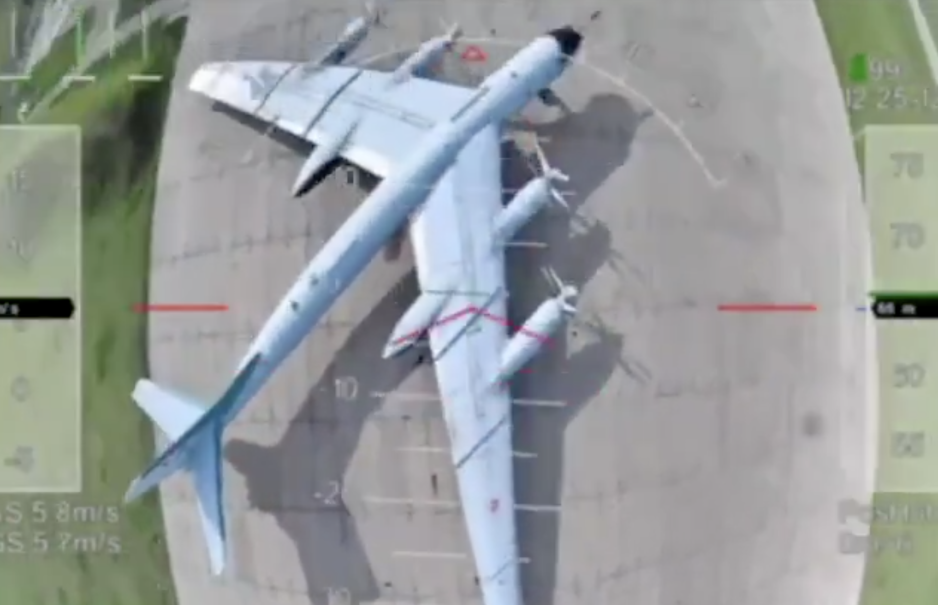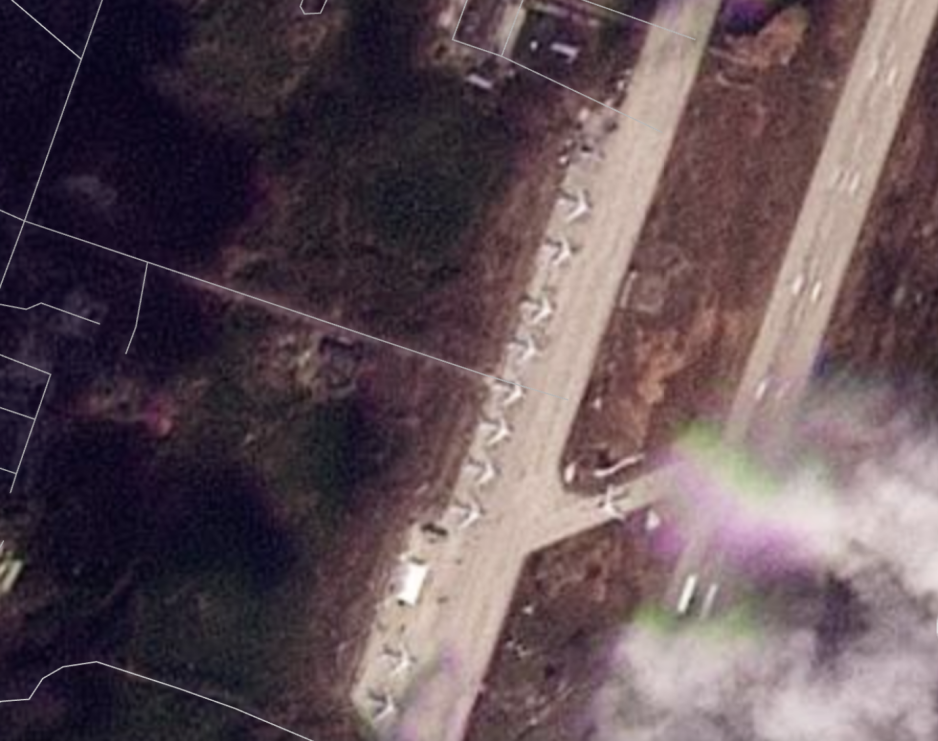Ukraine War Reaches Arctic With Massive Drone Attack on Olenya Air Base Near Murmansk

TU-95MS long-range bomber shortly before being destroyed by a drone at Olenya Air Base. (Source: Ukrainian Government)
Russia’s Arctic region around Murmansk was a key target during Ukraine’s “Operation Spiderweb.” Swarms of drones released in proximity to the Olenya Air Base 90km south of Murmansk destroyed a number of long-range bombers and surveillance aircraft.
In a long-planned special operation Ukraine forces have successfully targeted at least four air bases deep inside Russia, destroying more than 40 heavy bombers and surveillance aircraft.
A key target was the Olenya Air Base above the Arctic Circle south of Murmansk. The base sits at a distance of 2,000 kilometers from Ukraine and is around 200 kilometers from Norway’s northern border.
The Murmansk region and Kola Bay are home to key industrial and military complexes, including reloading facilities for Arctic crude oil and construction plants for liquefied natural gas terminals.
Russia had in recent days reportedly relocated a large number of aircraft from other airfields to the remote and heavily protected facility.
Images show numerous aircraft
Satellite images taken last week show a buildup of Russia’ strategic aviation forces at the air base including up to 40 Tu-22M3 and 11 TU-95MS long-range bombers.
By some accounts some 20 percent of Russia’s strategic long-range aircraft had been shifted to Olenya, with experts calling it an unprecedented redeployment.

Russian bombers at the Olenya Air Base on May 26. (Source: Sentinel 2)
Video footage of yesterday’s attack suggests that the Ukrainian operation was most successful at Olenya as well as Belaya airbase in Irkutsk, nearly 4,500 km from Ukraine.
Special forces
In total at least 41 heavy Russian bombers have been damaged or destroyed with preliminary figures placing the material loss at $2bn, with some Ukrainian sources citing up to $7bn. By some estimates a third of the country’s strategic bombers was struck by the attack.
Details released by official Ukrainian channels or government-affiliated sources say that “Operation Spiderweb” was carried out by SBU special forces and reportedly personally supervised by President Zelenskyy.
"An absolutely brilliant result. A result achieved solely by Ukraine. One year, six months, and nine days from the start of planning to effective execution. Our most long-range operation," Zelenskyy said.
Small drones
Small, FPV (first person view) drones located inside mobile containers loaded onto trucks were released in proximity to the military installations. The method suggests an elaborate operation within Russia with assembly and control of the drone from within the country.
The Olenya base had previously been the target of a more conventional large long-range drone attack in September 2024, though with limited success. This latest scheme instead relied on hundreds of small drones armed with explosives. It is not yet clear if the drones were piloted manually or were controlled autonomously by computers. Experts suggest that Ukraine may have used models of the target aircraft to train AI to guide the drones to their intended target.
Ukraine likely had to overcome the obstacle of GPS jamming which has been reported extensively in the High North often reaching into North Norwegian airspace. Norwegian pilots frequently experience GPS jamming in the Finnmark region, particularly when approaching and departing from airports.
Unconfirmed reports also indicate that a separate attack may have occurred at Severomorsk to the northeast of Murmansk, home of Russia’s Northern Fleet. However, details of a possible target remain scarce as of Monday midday with Russian officials denying any attack on Severomorsk. RBC Ukraine, the country’s main news agency, confirmed that an explosion had taken place at Severomorsk but did not provide additional information.


